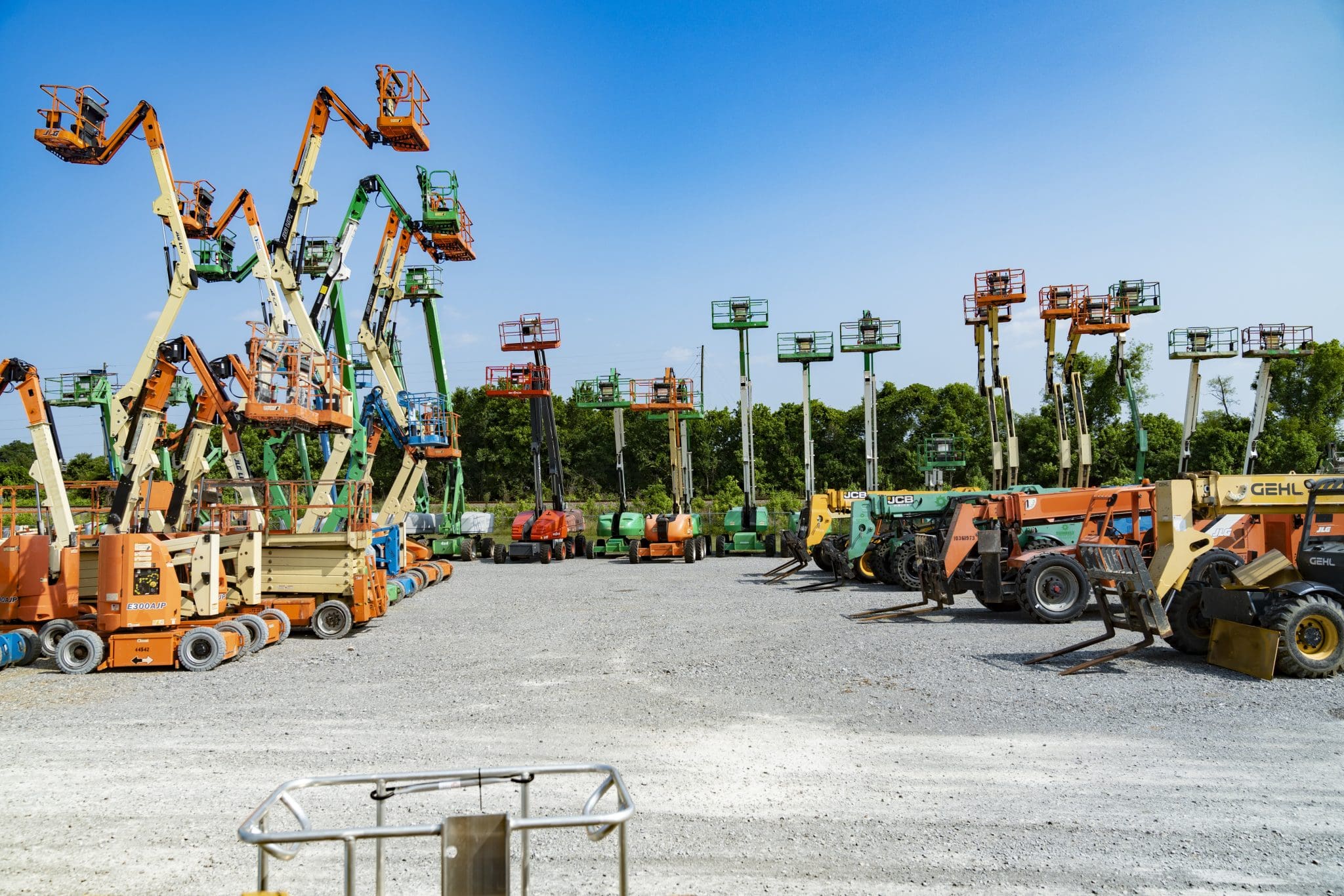
Heavy machinery like forklifts and scissor lifts can be essential tools on a job site. These specialized machines can be costly, but whether you’re launching a new business or upgrading your current operations, the investment can pay for itself quickly. By leveraging financing, you can make the purchase more affordable and preserve your cash flow.
Like cars, heavy machinery that is purchased new from a dealer can depreciate quickly1. Unless your budget allows for a new machine, or your jobs demand new, you may want to consider buying used.
While a used machine may not offer the same protections as a new one, it can still be reliable and is often available for a fraction of the original price. This can make approval easier, lower your monthly payments, and help you get the equipment you need without stretching your budget. You may be surprised to learn that financing rates for used equipment are often not far from those for new.
The sticker price isn’t the only cost to consider when making a purchase. Sales tax and transportation to get the machine to your yard can add significantly to the total cost. Many dealers offer freight services for added convenience, and in general, the closer the machine is to you, the lower the freight cost will be. This means a newer machine located just 100 miles away may end up being more affordable than an older model located halfway across the country. These “soft costs,” such as taxes and freight, can be rolled into your financing as well to make the purchase more manageable.
When buying used, it’s essential to know the machine’s history and usage. Ask the dealer how many hours are on the battery, and inspect the tires, hydraulics, and lift mechanisms for any damage or excessive wear. While some wear is normal with used equipment, make sure the dealer’s description matches the machine’s actual condition. Receiving a machine that is not operating as it should can cause costly delays and unnecessary headaches.
Once you’re confident the machine’s condition meets your needs, verify that all safety features are intact and functioning properly. Systems such as the horn, seatbelts, and brakes must comply with industry safety standards. To ensure compliance, compare the machine against all relevant OSHA requirements before finalizing your purchase.
Without question the most important consideration is whether the machine fits your needs. Financing a machine is a serious commitment and buying the wrong machine can be a financial burden. Don’t settle for a machine that doesn’t meet all your needs and don’t choose a machine solely on price.
At Aerial Titans, we offer flexible financing options tailored to fit your budget. The application process takes just minutes, and many buyers receive approval within hours. We even have programs designed for customers with less-than-perfect credit.
Financing is available for up to 60 months on used equipment and up to 84 months on new equipment. Purchasing equipment may also provide tax advantages — qualified purchases can often be deducted under IRS Section 179 or through bonus depreciation, which is currently set at 100%. Consult with your tax advisor to see how these benefits may apply to you.
Buying equipment can be costly, but it’s also an investment that can boost your business’s efficiency and output. Financing is a powerful tool that allows you to spread payments over time while enjoying the same tax benefits as paying in cash. Many equipment loans require no down payment, and financing provides a predictable monthly expense that’s easy to budget for.
Financing equipment offers several advantages over paying cash, the most obvious being a reduced initial outlay. For a growing business, a large purchase can significantly impact working capital. As the saying goes, cash flow is king. Financing helps preserve cash flow, allowing you to invest in other areas such as staffing, marketing, or covering unexpected expenses.
Fixed interest rates mean your payments remain consistent throughout the life of the loan, making budgeting easier. Purchasing equipment can also be a smart tax strategy — in many cases, you may be able to deduct the cost from your business’s taxable income. Consult with your tax advisor to determine how these benefits apply to your situation2.
Familiarize yourself with the different financing options available, including equipment leases and equipment loans3.
Leasing can be a smart way to protect against equipment obsolescence, as it offers the flexibility to upgrade every few years. Lease payments are typically lower than loan payments, allowing you to potentially afford a higher-quality or more capable machine. At the end of the lease, you generally have the option to purchase the equipment for a balloon payment or return it.
Financing (equipment loans) gives you ownership of the equipment from the start. This allows you to depreciate the asset and take advantage of any applicable tax benefits. Financing is ideal if you plan to keep the equipment long-term and want to build equity in the asset.
Your credit score and overall financial history play a major role in securing favorable financing terms. While every lender uses its own criteria to evaluate applicants, it’s safe to say that stronger credit profiles typically qualify for the lowest interest rates, the highest approval amounts, and the most flexible repayment terms.
Lenders often look beyond just your credit score — they may also review your payment history, business financial statements, and the length of your credit history. Consistently paying bills on time, keeping credit utilization low, and maintaining healthy business cash flow can all help you qualify for better terms.
Even if your credit is less than perfect, financing is still possible. Some lenders offer specialized programs for applicants with weaker credit, though these may come with higher rates or shorter repayment terms. In such cases, offering a larger down payment or providing additional collateral can improve your chances of approval and potentially lower your costs.